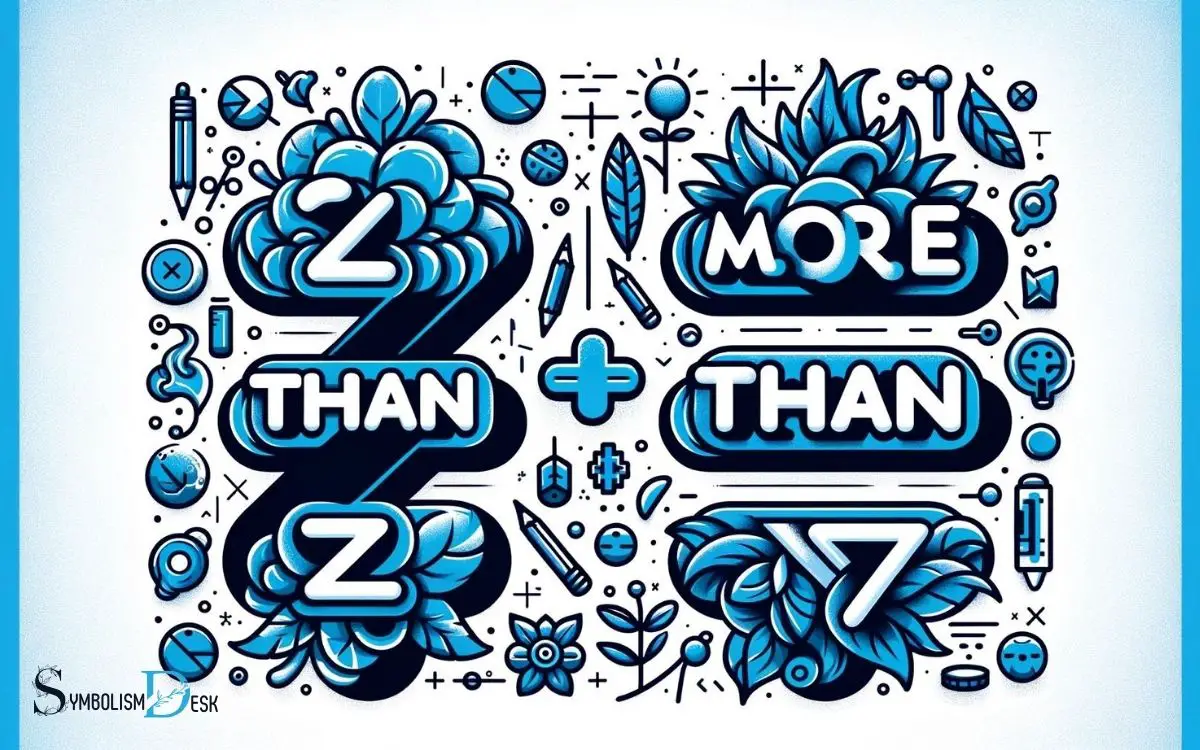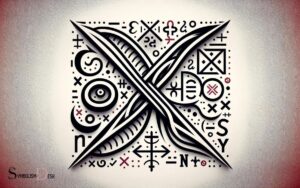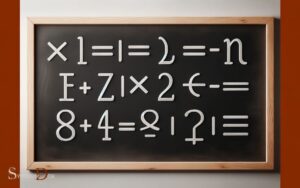More and Less Math Symbols: Relationships!
The ‘More and Less’ math symbols typically refer to the greater than (>) and less than (<) signs in mathematics. These symbols are foundational to expressing inequalities and comparing numerical values, relationships, or quantities.
The greater than symbol (>) indicates that the number on the left is larger than the number on the right, while the less than symbol (<) indicates the opposite.
They are essential in a wide range of mathematical contexts, including:
For example: – 5 > 3 (5 is greater than 3) – 2 < 4 (2 is less than 4)
Understanding these symbols is critical for navigating mathematical concepts and solving problems effectively.

Key Takeaway
Understanding More and Less Math Symbols: Greater and Less Than
| Symbol | Name | Example | Meaning |
|---|---|---|---|
| > | Greater than | x > 10 | x is more than 10 |
| < | Less than | y < 5 | y is less than 5 |
| ≥ | Greater or equal to | z ≥ 7 | z is 7 or more |
| ≤ | Less or equal to | w ≤ 2 | w is 2 or less |
The Evolution of Mathematical Notation
The evolution of mathematical notation has been marked by a gradual transition from cumbersome and verbose representations to more concise and universally accepted symbols.
Early mathematical notations were often lengthy and ambiguous, making it challenging for mathematicians to communicate and understand complex concepts.
Over time, scholars recognized the need for standardized symbols to represent mathematical ideas clearly and efficiently.
This led to the development of widely accepted notations for operations, variables, and functions, such as the use of “+” for addition and “x” for multiplication.
The adoption of these symbols facilitated clearer communication and enhanced the development of mathematical theories and applications.
Understanding the historical progression of mathematical notation provides valuable insights into the factors contributing to symbol proliferation and the impact of these symbols on the field of mathematics.
Factors Contributing to Symbol Proliferation
During the historical progression of mathematical notation, several factors have contributed to the proliferation of symbols, shaping the landscape of mathematical communication and problem-solving methodologies. Understanding math symbols is crucial for effectively conveying mathematical concepts and procedures. As mathematical notation continues to evolve, it becomes increasingly important for students and professionals to have a strong grasp on the meanings and uses of various symbols. Additionally, the accessibility and widespread use of digital tools have also influenced the development and utilization of mathematical symbols in modern times.
- Cultural Influences: Different cultures and civilizations have introduced unique symbols and notations, leading to a diverse range of mathematical symbols.
- Advancements in Mathematical Concepts: The development of new mathematical concepts and fields has necessitated the creation of corresponding symbols to represent these ideas.
- Technological Innovations: The advent of digital tools and typesetting technologies has made it easier to create and reproduce a wide variety of mathematical symbols.
- Interdisciplinary Connections: As mathematics becomes more intertwined with other disciplines, the need for symbols from various fields has increased, contributing to the proliferation of mathematical notation.
Impact of Computational Tools on Symbol Usage
Computational tools have profoundly influenced the utilization of mathematical symbols, revolutionizing the way mathematical concepts are expressed and manipulated. With the advent of computational tools, the reliance on traditional mathematical symbols has evolved.
These tools have enabled the manipulation of complex equations, leading to the creation of new symbols to represent these operations.
Additionally, computational tools have facilitated the visualization of mathematical concepts, reducing the need for certain symbols while emphasizing the significance of others.
Furthermore, computational tools have allowed for the development of specialized symbols to represent unique functions or operations, expanding the mathematical symbol lexicon.
As a result, the impact of computational tools on symbol usage has been substantial, altering the landscape of mathematical notation and its application.
Decline of Traditional Math Symbols
Having revolutionized mathematical notation, computational tools have precipitated a gradual decline in the utilization of traditional mathematical symbols.
This decline is attributed to several factors:
- Increased Reliance on Graphical Representations: Graphs and visualizations are being used more frequently to convey mathematical concepts, reducing the need for traditional symbols.
- Emphasis on Verbal Explanations: With the rise of collaborative and interdisciplinary work, there is a growing emphasis on verbal explanations over symbolic representations.
- Integration of Natural Language Processing: Advancements in natural language processing have enabled the use of plain language to describe mathematical operations, diminishing the reliance on symbols.
- Rise of Algorithmic Thinking: The shift towards algorithmic thinking has led to a greater emphasis on procedural understanding over symbolic manipulation, impacting the usage of traditional math symbols.
Implications for Mathematical Communication
The decline of traditional mathematical symbols has significant implications for mathematical communication as it necessitates a reevaluation of the most effective means of conveying complex mathematical concepts.
With the decreasing use of symbols, mathematicians and educators must find alternative methods to communicate abstract ideas clearly.
This shift requires a balance between written explanations, visual aids, and interactive demonstrations to ensure comprehensive understanding.
Conclusion
The changing landscape of mathematical notation reflects the ever-evolving nature of human communication. Like a complex equation, the symbols of mathematics have multiplied and transformed over time, influenced by technological advancements and cultural shifts.
As traditional math symbols decline in usage, it is imperative for mathematicians and scholars to adapt and innovate in order to effectively convey complex ideas and theories in the language of mathematics.






